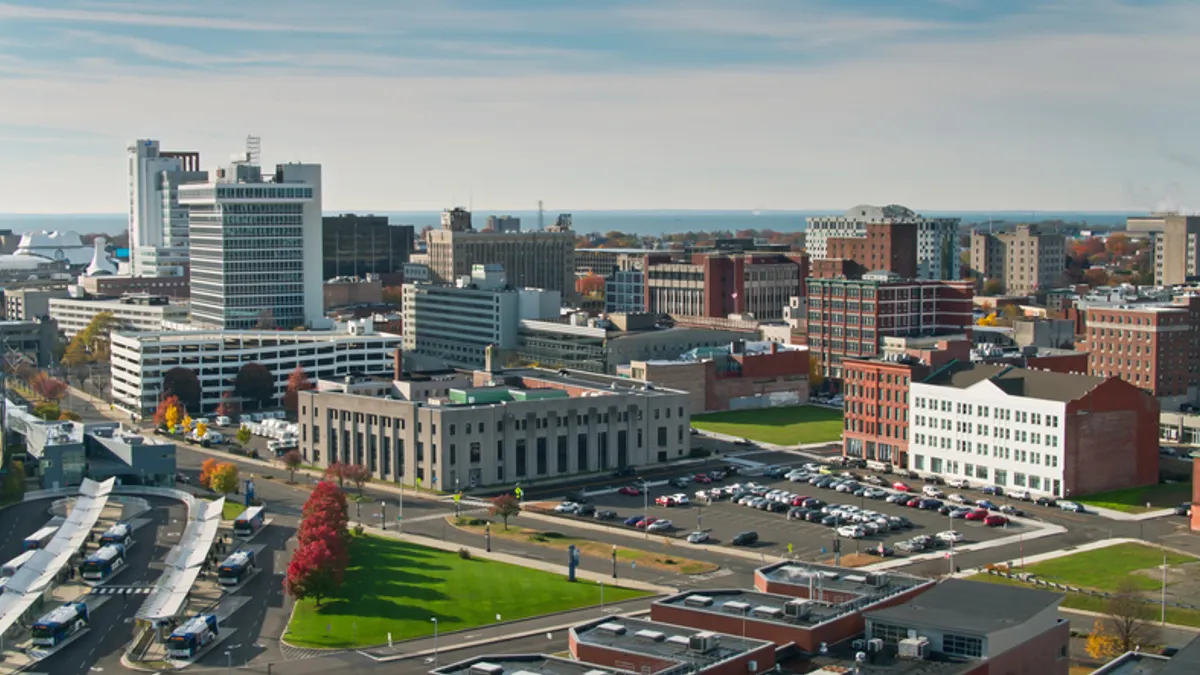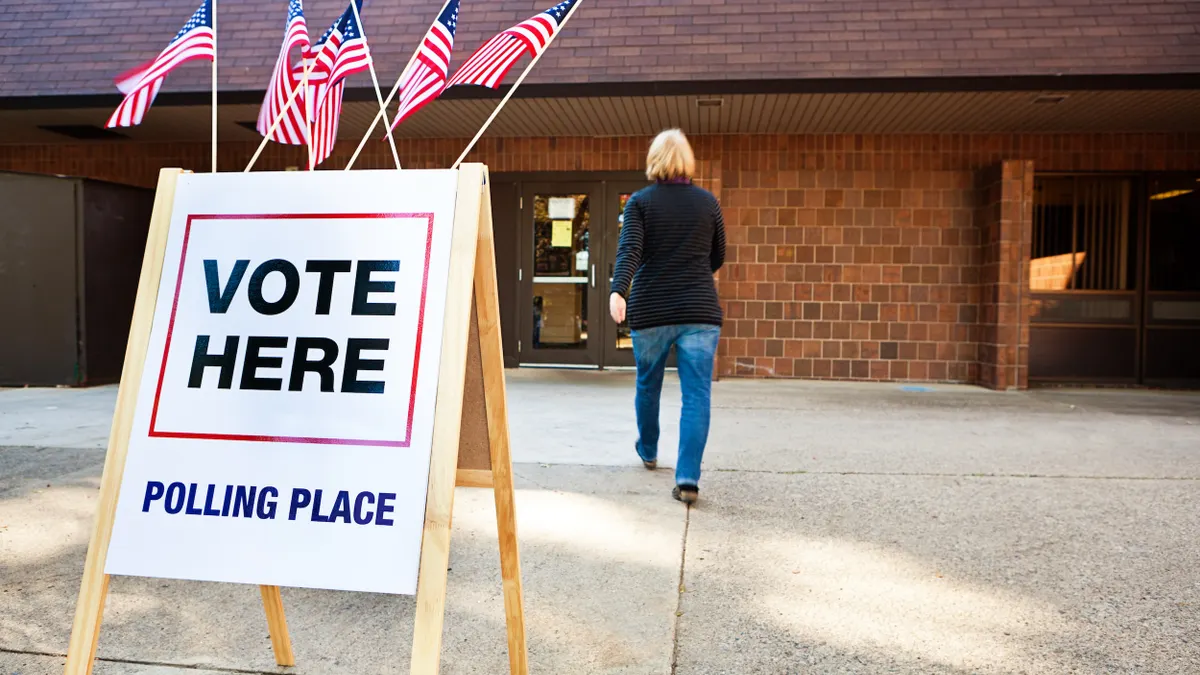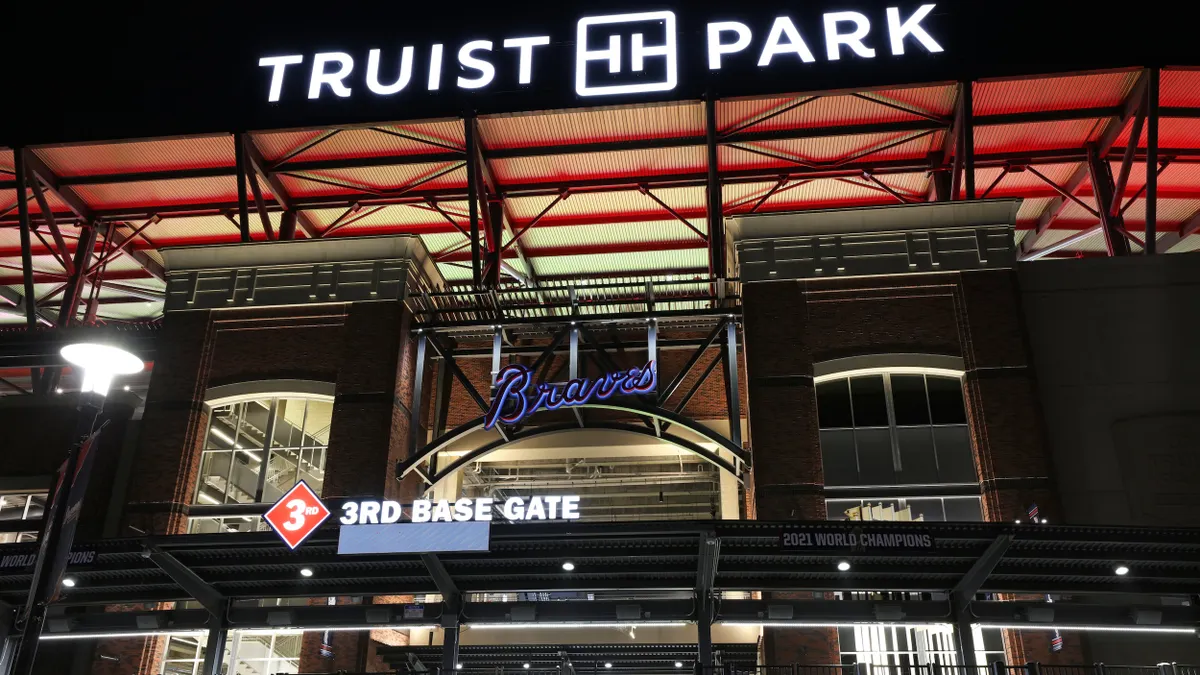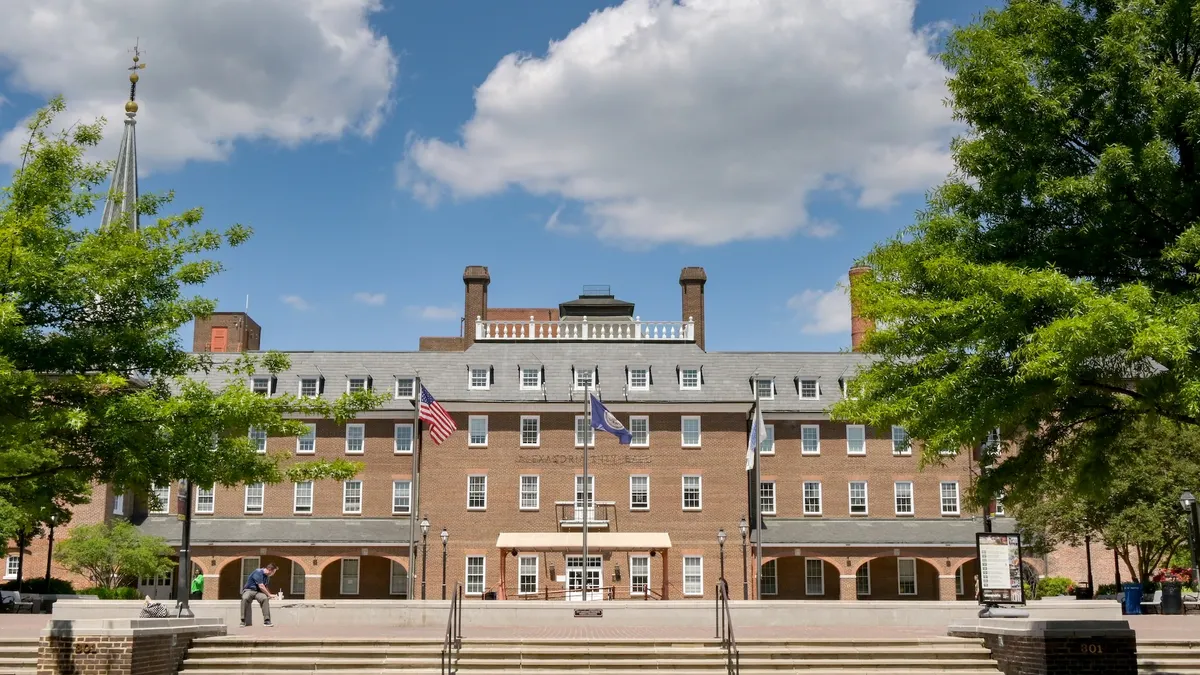Last week, Smart Cities Dive published the first part of a two-part interview with D.C. Chief Technology Officer Archana Vemulapalli, following her appearance at the city's Inclusive Smart Cities Summit. Vemulapalli touched on mobility and meeting the diverse needs of D.C.'s residents, stating, "As a city, we will not grow if we don’t cater to everybody."
In the second part of this discussion, Vemulapalli continued with this theme of inclusivity while highlighting the innovative projects Washington is working on and the need for transparency in data collection.
The following interview has been edited for brevity and clarity.
SMART CITIES DIVE: You've talked both about being a strategic partner and about public-private partnerships. Are those concepts that you're pursuing more and finding success with?
VEMULAPALLI: The strategic partner piece is about how you leverage technology. I fundamentally think that most people don’t leverage technology the right way. That’s because when you don’t understand the power of technology, and if the technologists don’t understand the business really well, they don’t really deliver solutions that can give you impact. If you’re strategic about it, you can actually take your investments — whether existing or new — and deliver much more bang for the buck. The conversation goes away from the cost-centered piece to what is the value you’re generating and the benefit we’re seeing.
In terms of public-private partnerships, it has to be ongoing. In the technology space I think that’s still new. There’s a lot of buzz and conversations around it, but technology also changes so rapidly that a traditional P3 model might not necessarily work for cities. So we have to be more creative in how we make those work. I think having those conversations and exploring all avenues – traditional procurement as well as the newer P3 models – helps us because it gives us more flexibility.
Previously you spoke about D.C.'s technological advances, such as providing access to Wi-Fi. Many people probably aren't even aware of this or other projects you're working on. What else would you like residents to know that you’re doing to improve their smart city experience?
VEMULAPALLI: I definitely think talking to [the media] helps. I think the more you write about it, the more people read about it. We definitely put it out there every time we go out to make sure people are aware.
D.C. Wi-Fi is absolutely free. It is government-run, meaning we actually own and operate the Wi-Fi network. We haven’t outsourced it to anyone. We collect no information about people. We have 17% of the city covered already and our goal is to get to 25% by next year ... All the parks, all the pools, all the rec centers, wherever we think people tend to go most, we made sure those areas had coverage first. We’re being very strategic about how we expand it.
In addition to that is the idea of sensors and next generation trends that help residents and give them a better experience. We kicked off a smart waste management pilot where we deployed lids on existing trash cans with sensors embedded in them that can now tell the city about fill levels. So from a city operations standpoint, the Department of Public Works knows about potential dumping. They can now even potentially get data on scurrying, [meaning] if we have an incident of rodents they’ll know how to track it. We have a pilot with 400 trash cans that we are tracking and monitoring to see how we can get that data available to us to improve our services, but also to residents so they can see what’s going on in their neighborhoods.
Another one that we’re working on is looking at the idea of smart water fountains. We’re working with DC Water very closely to see how we define existing water fountains — for example in rec centers, outdoors, in schools — and see if there’s a way we can measure water quality and look at better quality filtering.
These are all real-world problems. If you think about it, it has nothing to do with technology, but these are cases where technology can help improve the service. If you take water fountains, if we get this right we can increase the life of our filters. You’re not just changing a filter because you think you need to do it at a certain time, but because it’s actually depleted. Or if there are issues with the water you know it up front before someone calls it in.
That’s how technology is helping us be better about things. It's the same thing with waste management. You can always call 311 and complain about an overflowing trash can, but if we have a sensor that tells us that and we see a pattern, we as a city now can quickly address that before [residents] see it.
Some people are resistant to municipal advances in technology and data collection because they worry about their data getting into the wrong hands. How do you ensure that the technology benefits residents and that their personal information won’t be compromised?
VEMULAPALLI: We always need to [use] best practices. One of the things we have is a data policy that defines how we collect information, what we collect, why we collect. We absolutely only collect information that we need. We are very, very careful about privacy concerns. We made sure when we issued our data policy earlier this year that we really took into consideration the fact that you have to always balance what you collect with what you share and never compromise someone’s right to privacy and personal space. I think we have that set up.
But one mindset that has to change with residents is [resistance to data collection]. When we collect information in government … We always collect it for improving services because our job is to deliver better service. We’re not a for-profit company, we’re not looking to re-sell your data. Our goal is to make sure we’re giving you an improved service. And if we’re not giving an improved service, we shouldn’t be collecting your information.
"I think in the future, cities are actually going to be in a position where we’ll have to come up with stronger policies to protect residents from that kind of invasion that’s going to happen."

Archana Vemulapalli
Chief Technology Officer, District of Columbia
There’s already a lot of information being collected about ourselves whether we like it or not. Any of us that has a smartphone has a tremendous amount of data out there based on the apps we surf, the services we access, our cell phone providers, our credit card providers. All of the app providers all have plenty of information that they are collecting. That is a bigger issue. I think in the future, cities are actually going to be in a position where we’ll have to come up with stronger policies to protect residents from that kind of invasion that’s going to happen.
When the issue is left to the government side ... I think us being transparent is a good thing. When we have an open program where we say we’re going to be open by default, we’re basically telling you we have nothing to hide. If there’s stuff you don’t need to know, we’ll give you a good enough reason why you don’t need to know it. So that actually takes away risk with what we collect and why we do it.
D.C. is a city with a lot of historical significance and many protected landmarks, monuments and buildings. Do you find it hard to balance advancement as a smart city and the fact that certain things can’t be altered because of regulations and historical protections?
VEMULAPALLI: That’s exactly what a smart city is. A smart city doesn’t mean you go and sensorize your whole city in a way that’s jarring and different. It’s about preserving your fabric. It’s about identifying what your city is, what makes it unique and what parts you want to preserve and what parts you want to change. With technology, how do you want to deploy it so it is seamless?
A good example is ... we were working on a pilot where ... we were looking at installing LED lights. If you talk to a technologist, we’d do a wide sweep assessment of all the lights in the city and replace them with the exact look and feel of that light. But when we looked in different neighborhoods, we saw that there were historic neighborhoods with a different kind of light, there were the famous Washington globe lights and there were people that didn’t want really bright lights in certain neighborhoods.
That’s where knowing the fabric of your city and knowing what really makes it tick is key because then we can plan our technology solutions so we can cater across the board.




















